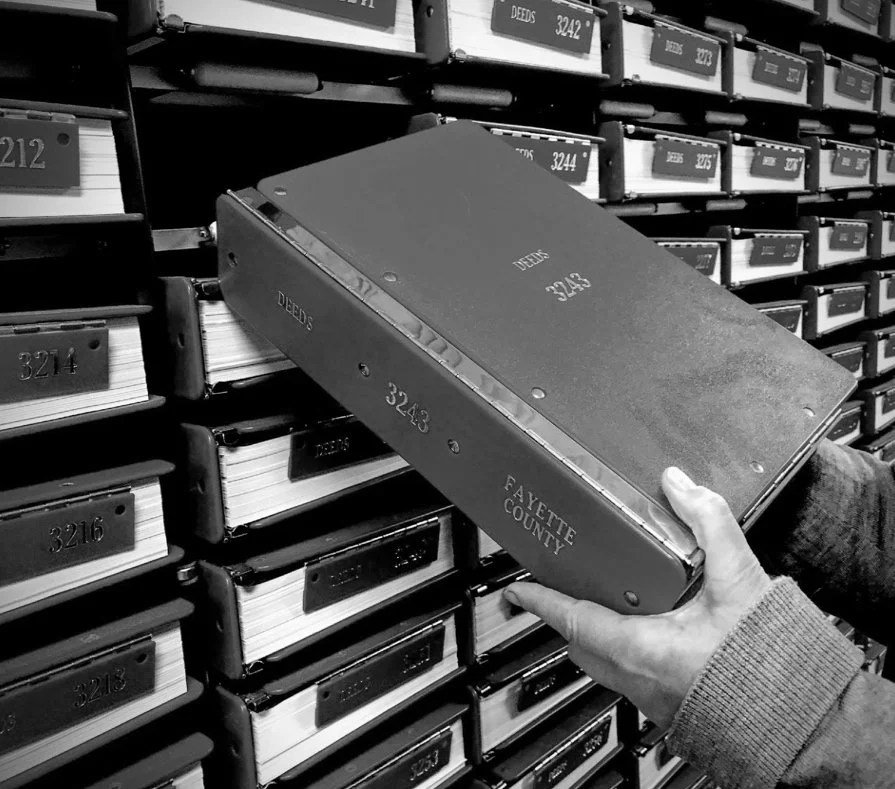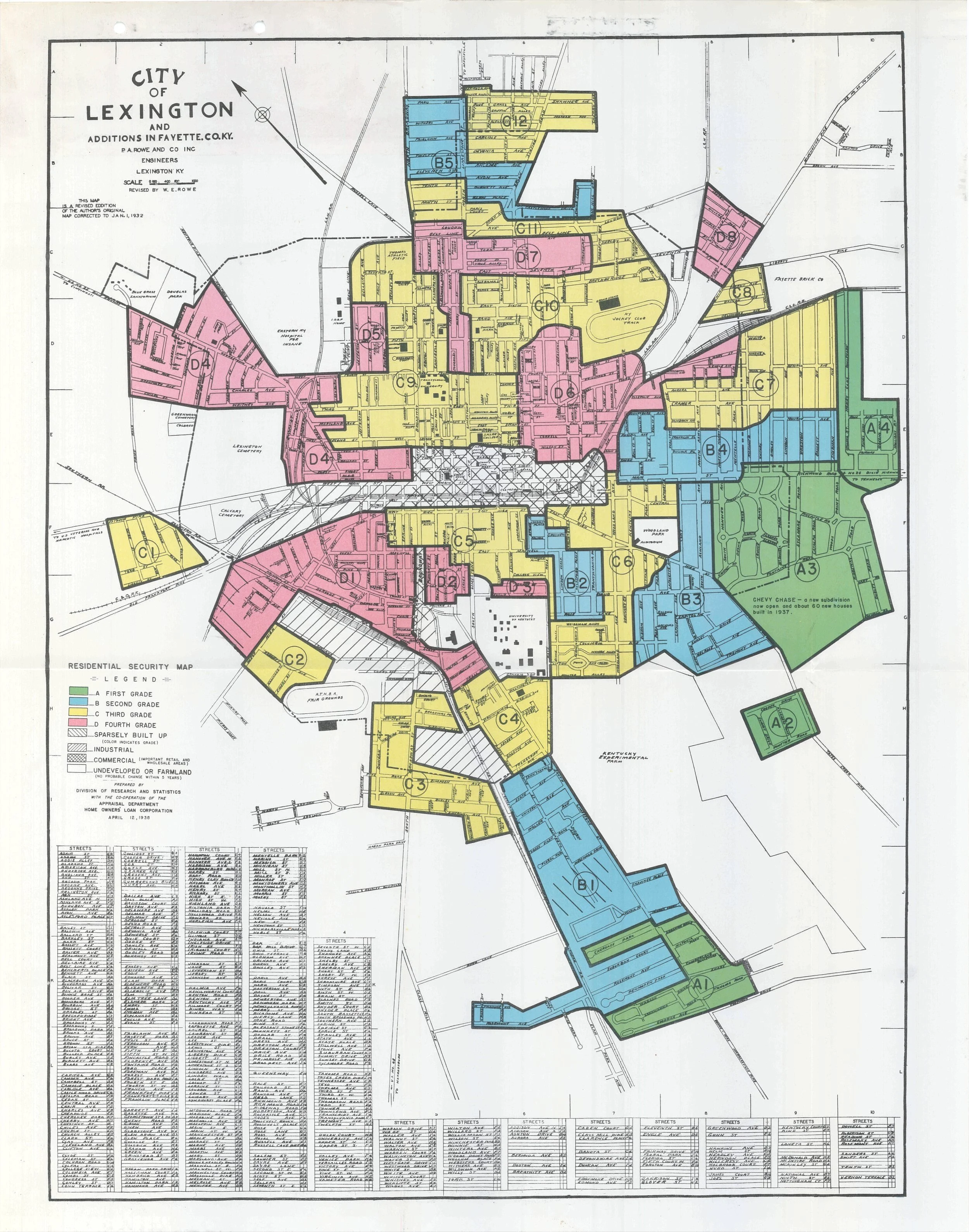On the Map
in the books
&
In the first half of the 20th century, many Lexington developers and home sellers used restrictive deed covenants to prohibit owners from selling or renting their homes to African Americans. Based on our preliminary research since 2020, we believe this practice was widespread in Lexington through at least the early 1950s. These restrictions did not just determine where Black families could and could not live: they also limited those families’ access to any kind of home ownership. The impact of the racial covenants lingers on even today in the wealth and home ownership gaps between Black and White families, and in the continued segregation of our city.
Special thanks to the Digital Access Project of Kentucky, LLC (DAP) Team for expanding access to Fayette County Kentucky’s historic records, including deeds, by making high-quality scans of them available online to the public. DAP is under the leadership of Co-Directors, Mr. Shea Brown, Special Projects Deputy Clerk in the Land Records Department of the Fayette County Clerk's Office, and Dr. Vanessa Holden, University of Kentucky History Professor. Please visit the Fayette County Clerk website at https://fayettedeeds.com as these images are being uploaded. For instructions on how to navigate the online website for DAP records, please follow this link: Fayette County Clerk DAP online instructions.
Community Research
Black Yarn has initiated a community-based research project to document all Lexington neighborhoods with racially restrictive deed covenants. Trained community volunteers and student interns are researching restrictive deeds using land records in the County Clerk’s Office. As we identify the neighborhoods, the LFUCG Division of Planning will create an online, interactive map that will help all of us understand how those covenants have affected life in our community.
VOLUNTEER
VOLUNTEER
FAQS for Volunteering
-
1.Develop a comprehensive list of all Lexington neighborhoods that have been subject to racially restrictive covenants
2.Make this information available to the public in attractive, user-friendly formats, including an interactive digital map
3.Engage community members in a worthwhile project that will deepen community understanding of Lexington’s past
-
The use of restrictive deeds was a major factor in the creation of segregated neighborhoods. Bringing to light Lexington’s history of intentional segregation will help our community acknowledge and reckon with the past, and move forward with more just policies. In some communities (for example, Minneapolis and Washington State), widespread understanding about restrictive deeds and other methods of segregation has led to significant repair programs.
-
We will assign you a neighborhood or part of a neighborhood, and you will use the County Clerk’s Office indexes to find plats and deeds for that neighborhood. You will read selected individual property deeds and make notes about them.
-
We will work with deeds in the land records department at the County Clerk’s Office, where the deed books are kept. All plats and some deeds have been digitized, so you can work with those online on your home computer.
-
You can put in as many or as few hours as you like. We have found this work to be deeply interesting, and we think you will find it time well spent.
-
Barbara Sutherland of Black Yarn, along with Shea Brown, Deputy Clerk for Special Projects at the County Clerk’s Office.
-
Yes. We start with an initial 2-hour orientation at the Clerk’s office, usually in groups of two or three. After that, most volunteers prefer to work one-on-one with Barbara or Shea for their first research session, before working on their own.
-
We won’t lie to you! While you will not be doing physical labor in the sun or rain, this work can be difficult. You will be lifting heavy deed books from shelves to waist-high tables, and you will often be standing on a hard floor. If you need help with the physical demands, you can schedule your volunteer visits when Barbara or Shea will be there.
-
We will provide the materials you need, and reimburse you for parking and photocopies.





